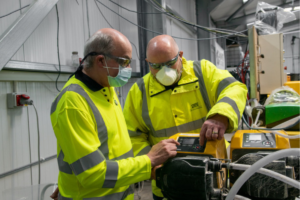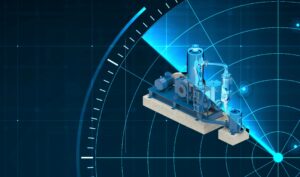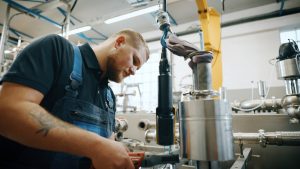![]()
EXAIR’s Ultrasonic Leak Detector (ULD), a hand-held instrument engineered to help locate the source of costly leaks in a compressed air system, has received an upgrade in look and function. Up to 30% of the compressed air generated in industrial plants is wasted through leaks that go undetected. The EXAIR ULD can play a major role to identify and pinpoint these costly leaks, allowing quick repair and cost savings. Testing the various unions, pipes, valves and fittings of a complete installation can be done quickly and effectively at distances up to 20′ (6.1m) away.
High pressure gases create high frequency turbulence when moving into an area with lower pressure, creating an ultrasonic or “white noise” sound that is beyond the range of human hearing. The ULD can detect these vibrations, creating an audible sound through supplied headphones as well as indicating intensity via front-facing LED display as it moves closer to the leak origin. The ULD can be adjusted to filter out background noise in busier plants with “+” or “-“ buttons for fine-tuning sensitivity. This new model offers a heightened ability to detect leaks in hard-to-reach areas while also complying with the IEC 61326-1 standard that designates its ability to operate in typical electromagnetic environments often found in industrial plants.
The Model 9207 Ultrasonic Leak Detector is CE compliant and comes complete with a hard-shell plastic case, headphones, parabola, tubular adaptor, tubular extension and AA batteries.
This article is published by
EXAIR was founded in 1983 as a manufacturer of compressed air-operated products to solve problems in industrial plants. These products are engineered to reduce air consumption and increase safety. Our products meet or exceed OSHA and CE standards while also compliant with RoHS, and REACH where applicable. EXAIR products include Super Air Knives, …
Source of Article



